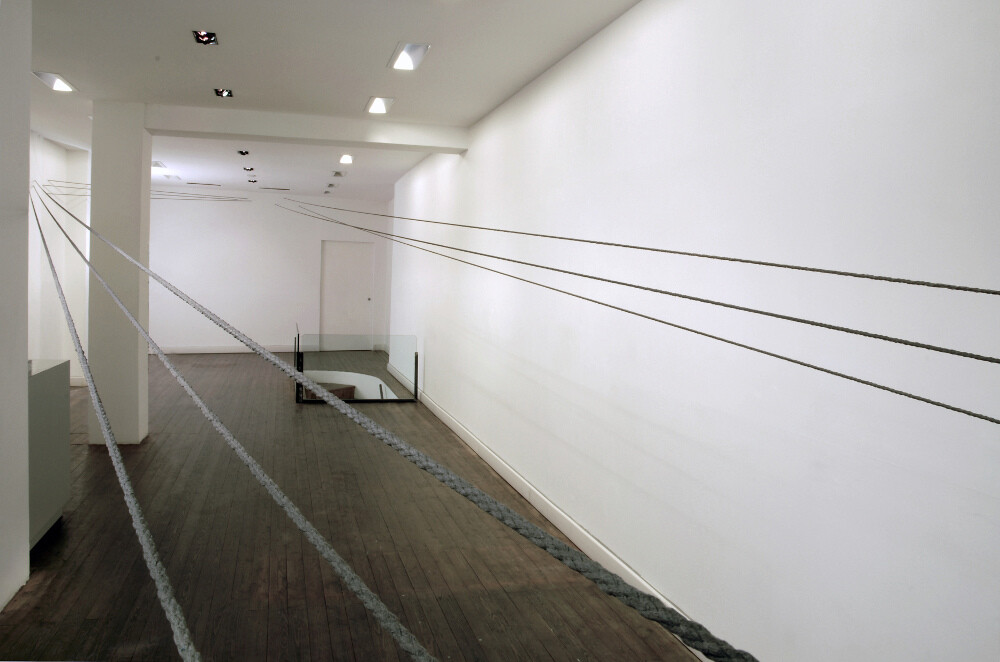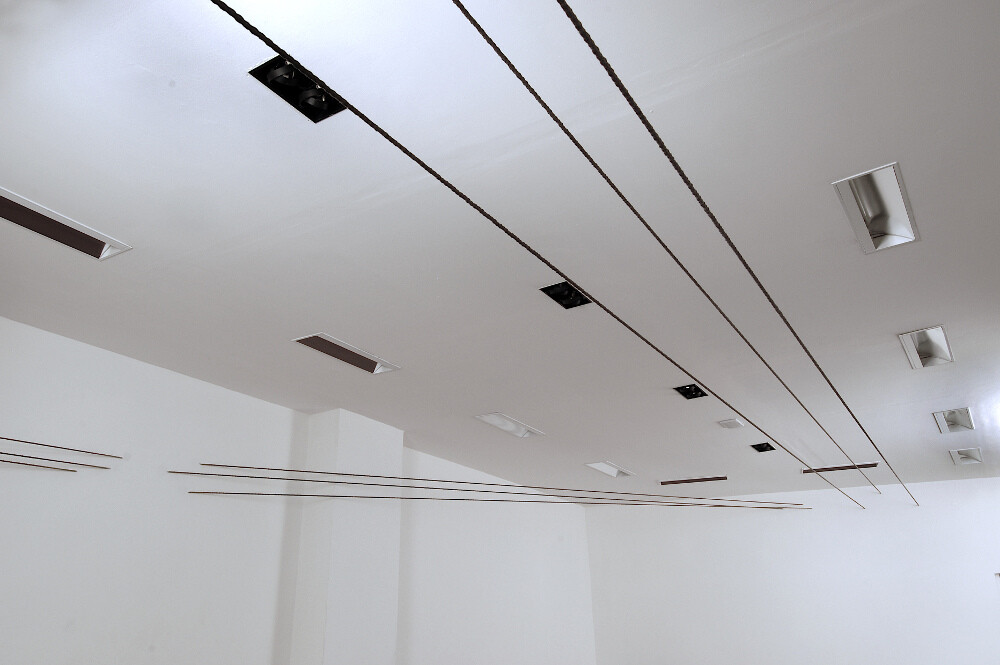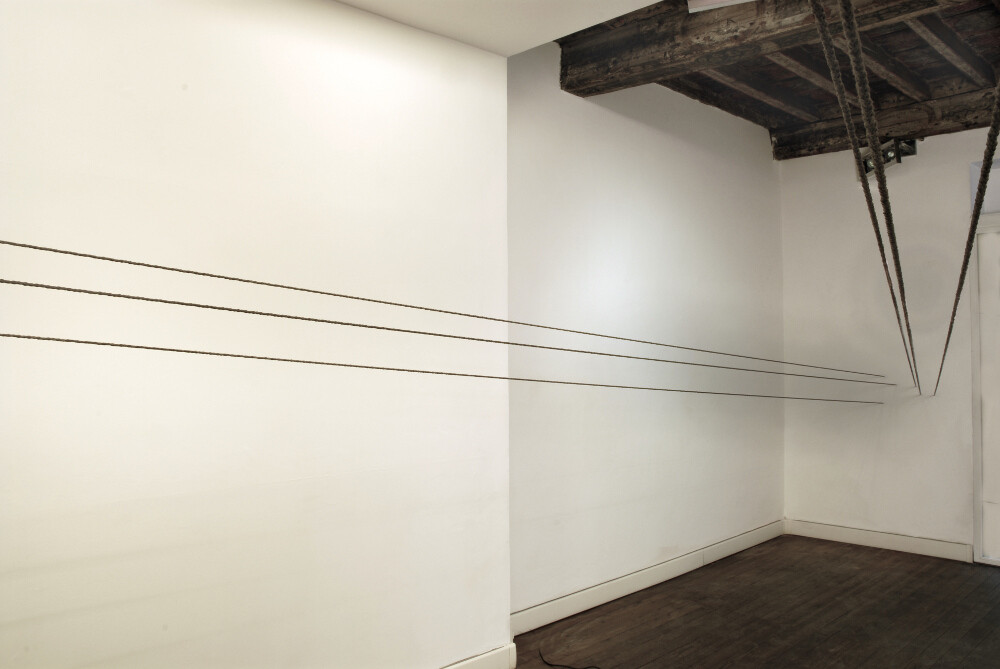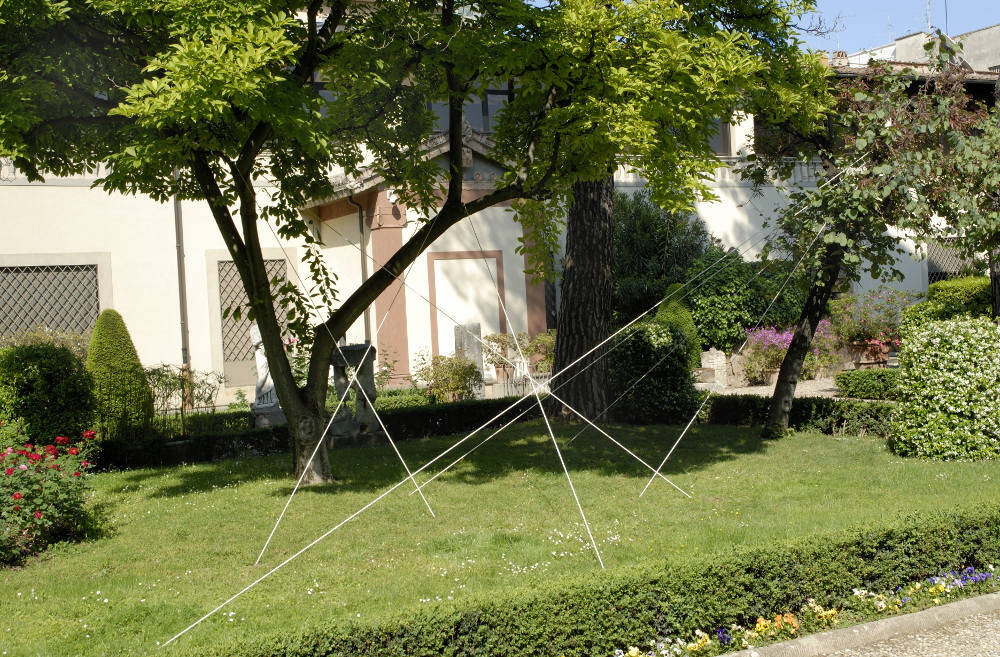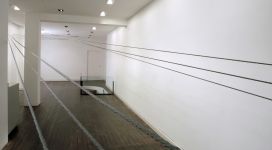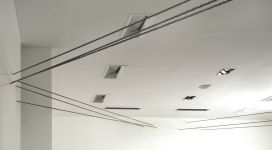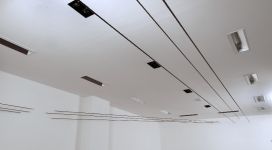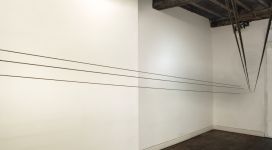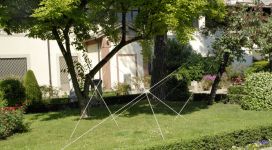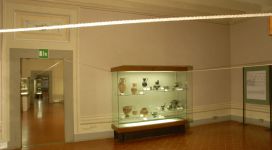| MIMMO ROSELLI | Biography | |
| Lineare | Catalog | |
| curated by ANDREA ALIBRANDI | ||
| 28 may – 20 july 2007 |
Contemporaneously with the exhibition in the rooms and garden of Florence’s Museo Archeologico Nazionale, Galleria Il Ponte devoted the solo show entitled Lineare to the artist Mimmo Roselli.
The first-floor room of the gallery underwent a great deal of work, giving rise to Round Il Ponte, a web of straight lines made using cotton ropes to build an ideal ‘holy’ place. The ropes outlined the whole room, going into the walls and coming out of the other side, in a triangular shape (a triangle as the “…sign, and place of meeting and cultural exchange among men…”). Given the long shape of the gallery, the layout of Round reveals a close relationship between the direction of space and the visual strength of the lines contained in it.
Lineare is a “quasi-verb” that the artist derives from the word “line”, an action that can be traced back to the meaning of crossing space or a surface with lines, as well as an adjective, linked to what is pure, coherent, upright.
“From the Round Il Ponte (2007) triangular installation of three rows of misaligned ropes and the others made at this very time in Florence’s Museo Archeologico and rear garden, entitled Il filo (2007) and Spazi praticabili (2007), we can make out,” as Bruno Corà writes in the catalogue, “that Roselli’s primary concern is to make us perceive those invisible but existing entities that come together in the observer’s thought, the projection in perspective of his gaze, the flows of energy present around and starting from each one of us, with the bonds and connections implicit between things and people and places…
…What Roselli has made are installations-tensions that above all incite the power of our imagination to enter a spatiality that is not so much physical as pertaining to drawing and the mind. The upshot is that he creates absolute and primary relations that can be transmitted onto the reality of places that are forever different but that he has nevertheless previously taken in. Roselli’s works innervate the space, giving it a relational attribute that once again ratifies, as if it were needed, the profound ethical meaning of his work.”
On display in the ground-floor room are recent oil paintings, where lines vibrating with feeling, at once precise and vague, as well as “…limits, separations, traces of action, references to a situation or a landscape…” cross the square surface of the work, seen as “…a place where man lives, the shape of a house… and virtually define the meaning of visual space”.
